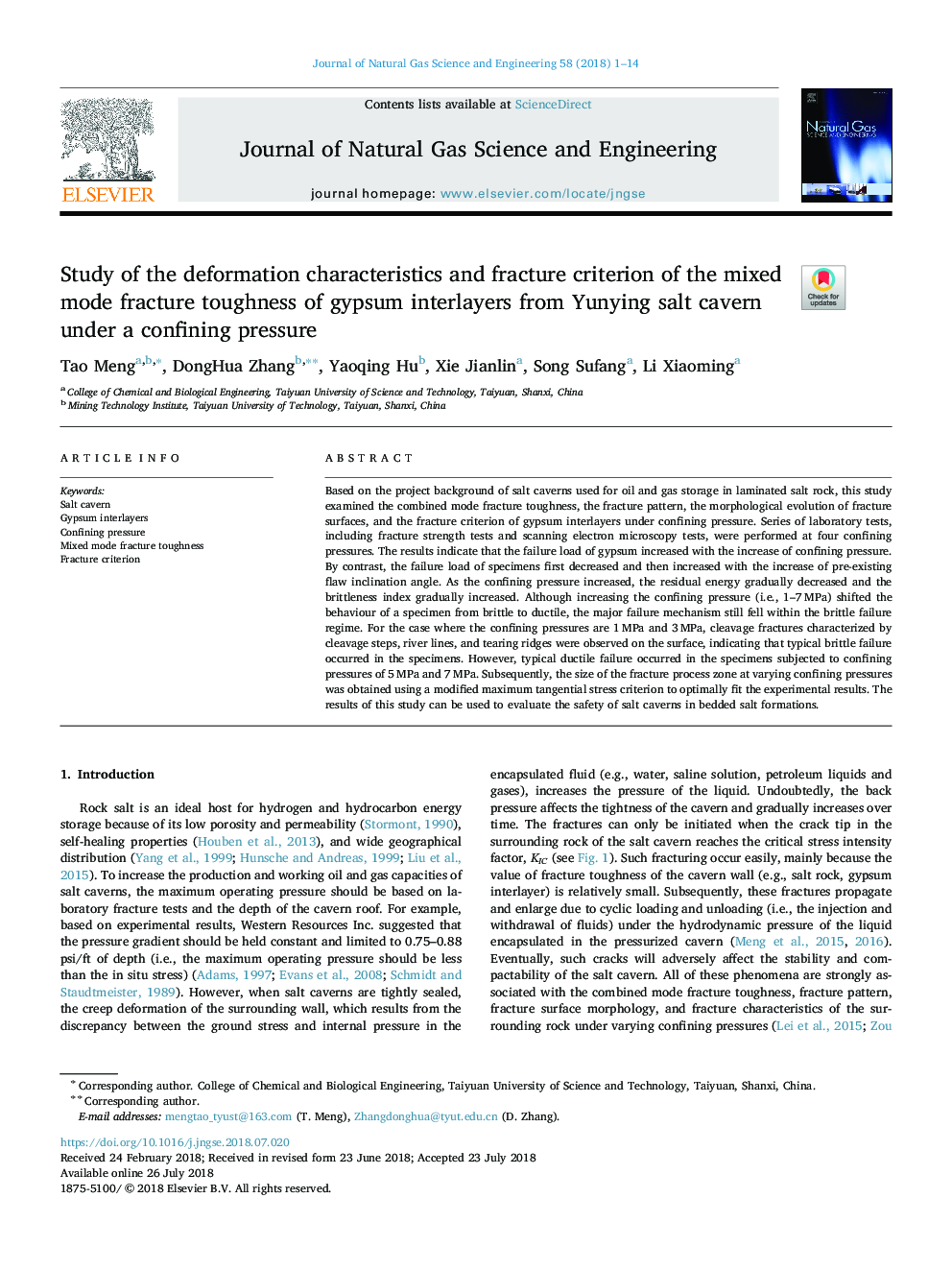| Article ID | Journal | Published Year | Pages | File Type |
|---|---|---|---|---|
| 8127778 | Journal of Natural Gas Science and Engineering | 2018 | 14 Pages |
Abstract
Based on the project background of salt caverns used for oil and gas storage in laminated salt rock, this study examined the combined mode fracture toughness, the fracture pattern, the morphological evolution of fracture surfaces, and the fracture criterion of gypsum interlayers under confining pressure. Series of laboratory tests, including fracture strength tests and scanning electron microscopy tests, were performed at four confining pressures. The results indicate that the failure load of gypsum increased with the increase of confining pressure. By contrast, the failure load of specimens first decreased and then increased with the increase of pre-existing flaw inclination angle. As the confining pressure increased, the residual energy gradually decreased and the brittleness index gradually increased. Although increasing the confining pressure (i.e., 1-7â¯MPa) shifted the behaviour of a specimen from brittle to ductile, the major failure mechanism still fell within the brittle failure regime. For the case where the confining pressures are 1â¯MPa and 3â¯MPa, cleavage fractures characterized by cleavage steps, river lines, and tearing ridges were observed on the surface, indicating that typical brittle failure occurred in the specimens. However, typical ductile failure occurred in the specimens subjected to confining pressures of 5â¯MPa and 7â¯MPa. Subsequently, the size of the fracture process zone at varying confining pressures was obtained using a modified maximum tangential stress criterion to optimally fit the experimental results. The results of this study can be used to evaluate the safety of salt caverns in bedded salt formations.
Related Topics
Physical Sciences and Engineering
Earth and Planetary Sciences
Earth and Planetary Sciences (General)
Authors
Tao Meng, DongHua Zhang, Yaoqing Hu, Xie Jianlin, Song Sufang, Li Xiaoming,
